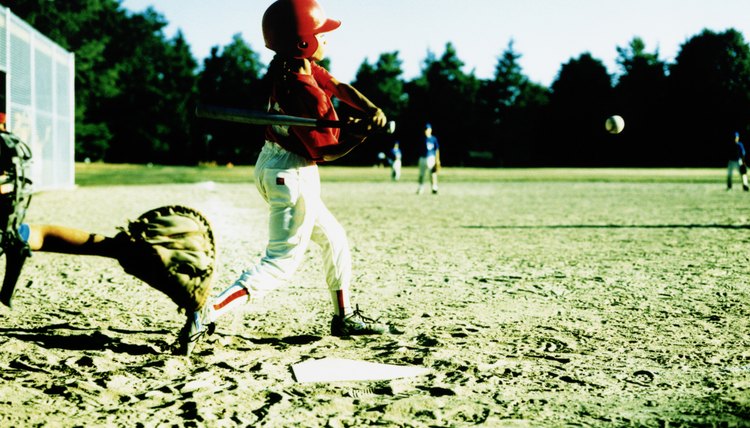Tips for Coaching Coach Pitch Baseball

Youth baseball players transition from tee ball to regular youth baseball by participating in coach pitch and/or machine pitch baseball. They take the often difficult step of hitting a moving ball. Coach pitch baseball allows the coach to adjust speeds and distances to hitters, giving extra help to those who need it. Machine pitch baseball gives hitters more consistent pitches to hit -- but the players aren't learning to see the ball out of the pitcher's hand. The key to coaching this transition stage is having players hit, hit and hit some more with various drills.
Develop Your Pitch Accuracy
The most important piece of coach pitch baseball is the coach's ability to pitch accurately and facilitate hitting. Show the ball as much as possible, keeping your glove out of the way. Use the same grip and the same motion to get into a rhythm. Throw the ball hard enough to keep a flat trajectory. Adjust your distance and speed to the hitter's ability. If necessary, pitch from one knee to pump in level strikes to the hitters.
Practice with Multiple Stations
Batting practice is obviously the critical piece of a productive practice. Coaches must practice their pitching and the young players need to hit. But meanwhile other coaches and parent helpers can run other drills involving hitting off of tees, soft-toss hitting into nets and hitting Wiffle or limited flight practice balls. Map the geography of these multiple stations in a way that keeps everybody safe. Rotate the players through the stations so they are getting lots of swings in every practice.
Tee Ball
The equipment you used in tee ball still has value. Baseball players up through the major league level use tees to improve mechanics. Young players can use them to focus on proper foot placement, stance and and swing mechanics. Stress the importance of hitting the ball slightly in front of the body. Underscore the importance of remaining balanced by having hitters freeze and hold their position after they finish their swing.
Soft Toss and Wiffle Toss
For soft toss, the batter stands facing a hitting net from a short distance. The coach or helper kneels to the side and the front of the hitter and lobs the ball into the hitter's swing plane. The hitter focuses on the ball and drives the ball into the net. Throw tennis balls instead of baseballs because these youngsters will often miss the net. With plastic-stuffed Wiffle balls or other limited flight balls, a coach or helper can pitch to hitters in an open field while players awaiting their turn to hit shag the hits.
References
Writer Bio
Jeff Gordon has been reporting and writing since 1977. His most recent work has appeared on websites such as eHow, GolfLink, Ask Men, Open Sports, Fox Sports and MSN. He has previously written for publications such as "The Sporting News" and "The Hockey News." He graduated from the University of Missouri-Columbia School of Journalism in 1979 with a bachelor's degree.
